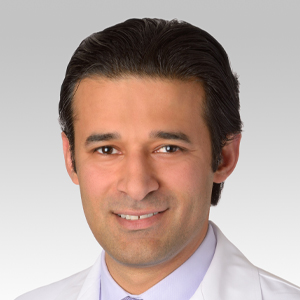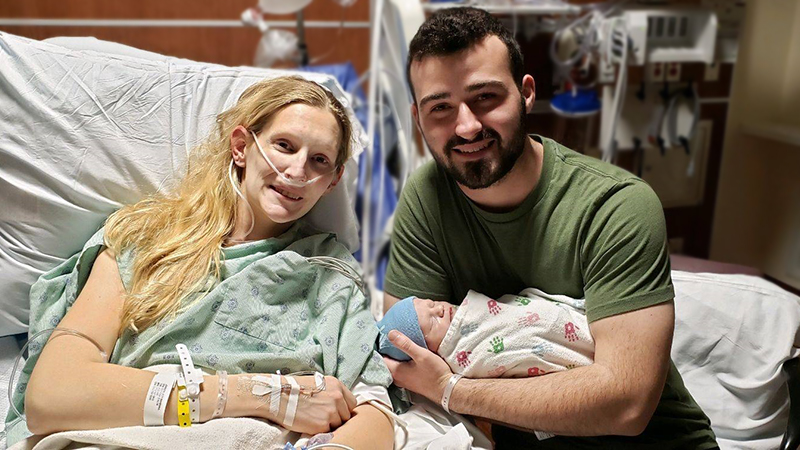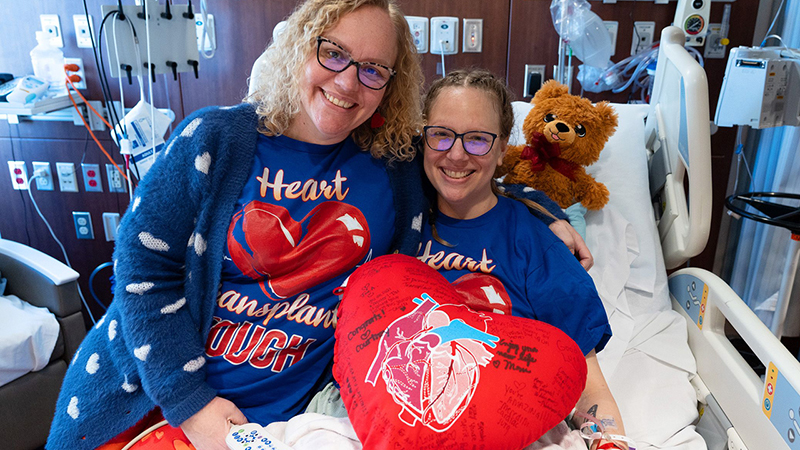Taking Action Against Coronary Artery Disease
Charles Vargas Receives World-Class Heart Care Closer to Home
Published January 2022
"I could've died," says 50-year-old Streamwood, Illinois, resident Charles Vargas. "I'm here today because I took action, and my doctor took action."
Charles Vargas was born and raised in Chicago, but he moved to the suburbs in his late 20s. Between his hobbies of paintballing and airsofting, and his job in a major delivery warehouse, Charles has a very active lifestyle.
"In airsofting, I'm constantly running, sweating and getting my heart rate up," he says. "At my job, I'm constantly moving, reaching, bending and burning calories."
However, though active, Charles was at risk for cardiovascular disease because he had a long history of smoking cigarettes.
I'm here today because I took action, and my doctor took action.— Charles Vargas
"Nicotine is so powerful and addicting that it takes over your life, and you put it first over your health," says Charles. "You think it impacts only your lungs, but the plaque caused by smoking impacts your entire cardiovascular system."
Scan, Symptoms and Stent
Scan
Due to his risk, Charles' primary care physician ordered a coronary calcium scan, which measures the amount of plaque (deposits made up of fat, cholesterol and calcium) build-up in your coronary arteries. This preventive scan can identify coronary artery disease (CAD). CAD occurs when plaque accumulates in the innermost layer of the coronary arteries, which supply blood to the heart.
When too much plaque builds up on the inside of the artery walls, they thicken and narrow, decreasing blood flow to the heart. This is called atherosclerosis. Over time, the plaque can rupture and cause a blood clot to form. This clot and the disrupted plaque can further block the blood and oxygen supply to the heart muscle, leading to a heart attack.
In the United States, CAD is the number one cause of death for both men and women, and nearly 13 million people have it.
Smoking is a major risk factor of CAD. Other risk factors include:
- Diabetes
- Diet high in saturated fat
- High blood pressure (hypertension)
- High LDL cholesterol, high triglycerides levels and reduced HDL cholesterol
- Physical inactivity
- Obesity
Symptoms and Stent
Soon after his coronary calcium scan, as Charles was waiting for the results, he started to feel really sick. He had chest pain that radiated down his arms and into his neck. Thinking he had COVID-19, he stayed in bed for a few days. At the time, Charles didn't know that he was experiencing symptoms of CAD.
Some people with CAD have no symptoms at all. Some common symptoms include:
- Chest pressure, tightness, heaviness or pain, also called an angina attack
- Back pain
- Jaw pain
- Neck pain
- Shortness of breath
- Weakness and fatigue
Charles couldn't have timed his coronary calcium scan better. The results showed he needed expert cardiovascular care immediately. He went to see Interventional Cardiologist Nauman Mushtaq, MD, at Northwestern Medicine Bluhm Cardiovascular Institute at Central DuPage Hospital, who performed a minimally invasive stent placement procedure.
"Charles had 90% stenosis, or narrowing, of his left anterior descending coronary artery," says Dr. Mushtaq. "Through a minimally invasive procedure involving a catheter inserted through a peripheral artery, we placed a drug-eluting stent in this artery to open it back up."
A stent is a small mesh tube placed inside an artery to keep it from collapsing. A drug-eluting stent is coated with a medication that helps prevent scarring around the stent, which could create a new blockage in the artery.
When Charles woke up from the procedure, he says he felt like a new person.
Recovery and the Road Ahead
"After the procedure, I felt rejuvenated," says Charles. "I always do pull-ups in the warehouse at work, and I started trying to do pull-ups in the recovery room."
Though Charles felt better immediately after stent placement, his recovery included cardiac rehabilitation and taking inventory of his habits to live a more heart-healthy lifestyle. Cardiac rehabilitation involved exercising under the supervision of Bluhm Cardiovascular Institute exercise physiologists to make sure his heart was functioning properly with the new stent in place. Charles quit smoking and started a heart-healthy diet, eliminating sugar, salt and fried foods from his diet and making sure to eat plenty of vegetables.
"I wish I could turn back the hands of time to live my life with more healthy habits, but I'm working to make healthier choices every day since Dr. Mushtaq saved my life," says Charles. "I'm so grateful for Dr. Mushtaq. If it wasn't for his troubleshooting, I wouldn't be here today."







